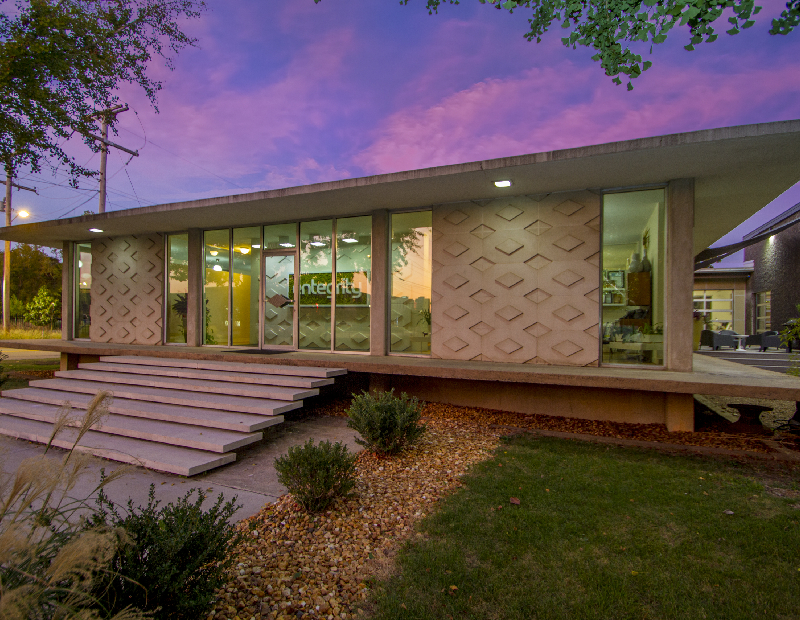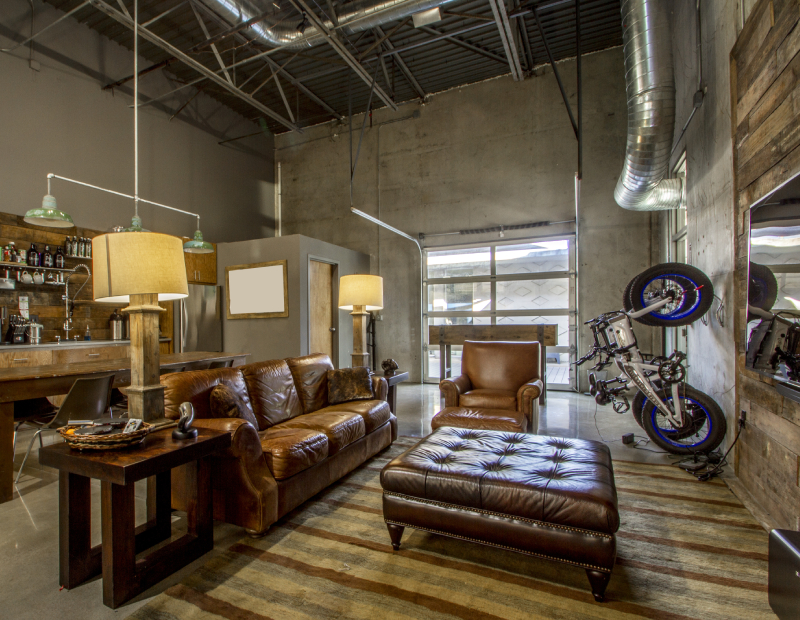Energy Upgrade Yields Big Savings in Little Rock
Entegrity’s retrofit of its historic headquarters offers a model for reducing a building’s carbon footprint.

The Entegrity headquarters retrofit of a Mid-Century Modern building on the National Historic Register shows that older buildings can also be adapted for net-zero energy. Image courtesy of Entegrity
When your business is built on green principles it’s a good idea to walk the walk. Entegrity did that and then some for its new headquarters in Little Rock, Ark. The company, which specializes in energy conservation and renewable energy projects, opted to renovate an existing building rather than commission a brand-new facility.
Entegrity’s decision to purchase and retrofit Little Rock’s historic Darragh Building, originally built in 1959, turned into a showcase for the team’s expertise. Completed in January 2017, the project serves as a roadmap for others because it earned the U.S. Green Building Council’s coveted LEED Zero Energy certification.
READ ALSO: Green Building Gains Territory
The 13,342-square-foot property located at 1403 E. 6th St. was the first building in the U.S. and only the second in the world to earn the designation. The first LEED Zero certification went to the engineering and consulting firm Petinelli for its headquarters in Curitiba, Brazil.
LEED Zero Energy certification recognizes buildings or spaces that achieve a source energy use balance of zero over a period of 12 months. Entegrity’s headquarters reaches that balance by pairing the building’s energy-efficient design with a 50-kilowatt rooftop solar array, effectively producing more energy than the building uses over a year.
The $500,000 headquarters renovation also earned Zero Energy certification from the International Living Future Institute, as well as LEED Platinum certification in February 2019. LEED Platinum was previously the top achievement for green buildings before the LEED Zero Energy program was inaugurated later last year.
The renovation cost about 3 to 5 percent more than a comparable standard project, reports Chris Ladner, founding partner at Entegrity. “But being net zero, we don’t have energy bills. In comparison, a non-net zero space similar to ours would see annual energy expenses of about 68 cents per square foot per year.” That would add up to an annual bill of $9,075, he notes.
“Entegrity’s Little Rock project shows that this kind of work doesn’t need to be expensive,” said Emma Hughes, LEED project manager at USGBC. “When we consider the business case for building green, what continues to make it a good investment are the operating cost savings, shorter payback periods and asset value increases.”
According to Hughes, a 2018 survey showed payback periods for a retrofit are about six years with decreased 12-month operating costs of 9 percent and a 5 percent increase in asset value. “Certification is a critical part of demonstrating value because it helps owners easily communicate to the market how their buildings are performing and provides credibility for zero energy claims,” Hughes added. “With LEED Zero and LEED v4.1, projects are using performance data to continually track and assess those efforts.”
A Net Zero Road Map
Since its founding in 2007, Entegrity has worked in 38 U.S. states. Currently, Entegrity operates offices in Arkansas, Tennessee, Mississippi, Oklahoma, Kansas and Missouri. The Little Rock headquarters reduces the company’s own carbon footprint while also demonstrating its core competencies.
Many of the country’s net-zero buildings have been on the West Coast. In the Midwest and mid-South, developers believe that it’s not quite as challenging to do net zero in the absence of temperature swings in winter and summer. “It was important to us that we could provide a net-zero building cost effectively in the mid-South in a less temperate climate,” Ladner said.

The net-zero energy facility reduces Entegrity’s carbon footprint while also delivering comfortable spaces for its occupants via electrochromatic windows that tint, high-control HVAC systems and LED lighting with dimming capability. Image courtesy of Entegrity
The Entegrity headquarters building—a much-admired example of Mid-Century Modern architecture designed by Noland Blass Jr. of the Erhart, Eichenbaum, Rauch, & Blass firm—features a unique elevated wraparound porch, floor-to-ceiling windows and distinctive architectural features throughout. It was placed on the National Register of Historic Places in 2017.
“That was appealing,” Ladner said, referring to the challenges of retrofitting a historic building to LEED Zero standards. “We enjoy the constraints associated with renovating an existing building; and, from a sustainability standpoint, we try to stay engaged on existing buildings because there’s a lot embodied energy in previous construction; anything you can use or reuse in existing facilities can put you ahead when it comes to sustainability, carbon and embodied energy,” he added.
Lacking a good set of original construction documents, the most challenging aspect of the project was determining the materials and energy performance the facility already had, according to Parker Higgs, director of energy engineering at Entegrity. “Once we could gather that information, we were able to use computer models to help determine various improvements and their energy impacts.”
READ ALSO: Raising the Bar for Greenhouse Gas Reduction
Energy modeling was used for energy reduction strategies in addition to the rooftop solar array to bring the building to net zero. Other features include electrochromatic glazing that has the ability to tint on demand through electronic controls and smartphone devices; LED lighting with color-changing and dimming capability that replaced the original fluorescent and incandescent lighting systems; and a lighting upgrade that has produced a lighting energy reduction of 90 percent.
In addition, heating and cooling systems have been replaced with high-efficiency heat pump HVAC systems. The duct system has been sealed to reduce leakage and re-insulated to reduce heat loss. The gas-powered hot water heating system was replaced with a hybrid heat pump water heater, which is three to four times as efficient as traditional electric resistance water heaters. Moreover, 100 percent of the facility’s already low energy load will be offset with a 50 kW roof solar photovoltaic system.
According to USGBC’s Hughes, among the four projects that have achieved LEED Zero Energy certification in 2020 is the Discovery Elementary School in Arlington, Va. More than 10 others are in the pipeline.
“It’s really exciting to see the activity and enthusiasm for the certification,” Hughes concluded. “Net zero is no longer an aspirational goal for buildings, it’s achievable and a critical strategy for the industry to realize a regenerative future. LEED Zero recognizes projects taking the necessary steps to get there and verifying their performance.”







You must be logged in to post a comment.